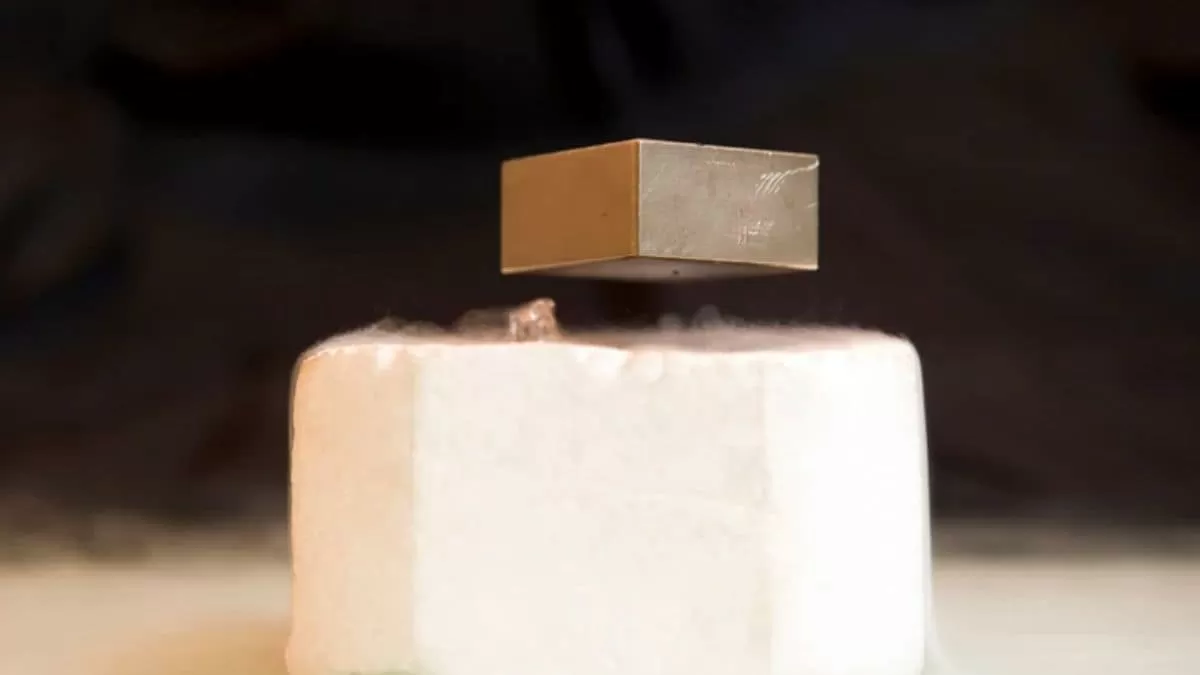Scientists at the Southern University of Science and Technology (SUSTech) have made a groundbreaking discovery that could revolutionize the field of superconductivity. In their recent study, the team of researchers identified nickelate superconductors that are capable of conducting electricity without any resistance at a temperature of 45K under normal atmospheric pressure. This remarkable achievement has the potential to drive significant advances in the field of superconductivity research, with possible applications in areas such as medical imaging and energy efficiency.
Superconductivity is a phenomenon where certain materials can conduct electricity with zero resistance when cooled to extremely low temperatures. This property has been a subject of intense research for decades, with scientists striving to understand and harness its potential for practical applications. However, most superconductors discovered so far require extremely low temperatures, making them difficult and expensive to use in real-world applications.
This is where the recent discovery by SUSTech scientists becomes truly significant. By identifying nickelate superconductors that can operate at a relatively higher temperature of 45K, the team has opened up new possibilities for practical applications of superconductivity. This temperature is still very low compared to normal room temperature, but it is a significant step forward in the field of superconductivity research.
The research team, led by Prof. Hai-Hu Wen, used a unique approach to identify these nickelate superconductors. They used a technique called molecular beam epitaxy to precisely control the growth of thin films of nickelates on a substrate of strontium titanate. This allowed them to create a material with the desired properties, which they then tested for superconductivity.
The results were astonishing. The team found that the nickelate superconductors showed zero resistance at a temperature of 45K, which is significantly higher than the previous record of 35K for a similar material. What makes this discovery even more remarkable is that the superconductivity was achieved under normal atmospheric pressure, making it easier to reproduce in a lab setting.
The study of unconventional superconductors, such as nickelates, has gained significant attention in recent years. These materials have complex structures and properties, making them challenging to understand and manipulate. However, the SUSTech research team’s findings have provided crucial insights into the behavior of nickelate superconductors, which could lead to further advancements in this field.
The potential applications of this discovery are vast and exciting. Superconductors have the potential to revolutionize power transmission, as they can carry electricity with zero resistance, resulting in significant energy savings. They can also be used in medical imaging devices such as MRI machines, where the use of superconductors could lead to improved image quality and reduced energy consumption.
The SUSTech research team’s findings have also strengthened global efforts to understand unconventional superconductors. The study has been published in the prestigious journal, Nature, and has already received widespread recognition and praise from the scientific community. This breakthrough discovery has put SUSTech on the map as a leading institution in the field of superconductivity research.
The team’s success is a testament to SUSTech’s commitment to promoting cutting-edge research and innovation. The university has been at the forefront of scientific advancements, with a strong focus on interdisciplinary collaborations. This approach has enabled scientists from different fields to come together and work towards a common goal, resulting in groundbreaking discoveries like this one.
In conclusion, the recent discovery of nickelate superconductors by scientists at SUSTech is a significant milestone in the field of superconductivity research. With the potential for practical applications in areas such as energy efficiency and medical imaging, this breakthrough has opened up new possibilities for the future. It also highlights the importance of continued research and collaboration in understanding unconventional superconductors and harnessing their potential for the benefit of society.

